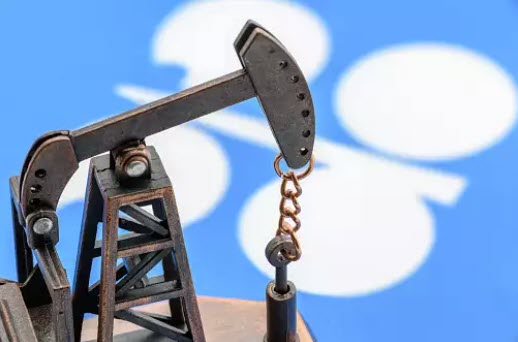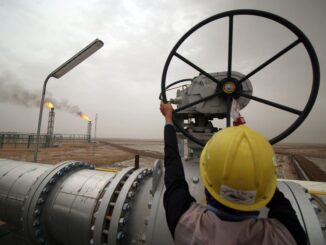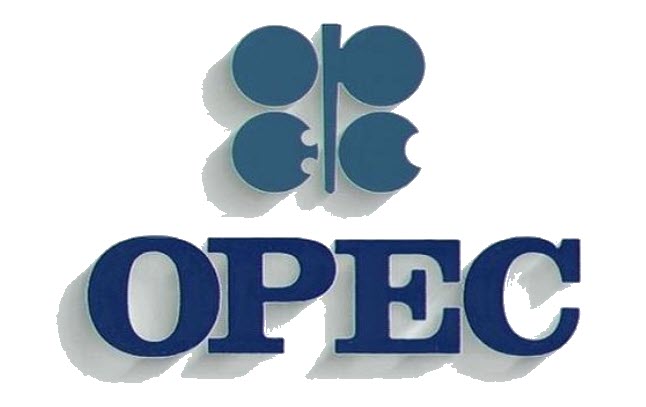
ENB Publishers Note: We expect cuts to be implemented as the COVID-19 cases continue to rise around the world, despite vaccine rollout. Follow Energy New Beat’s LIVE daily show at 2 PM MST everyday for continued coverage from the fallout of OPEC+ meet
UPDATE:
According to delegates Russia and UAE want to increase 500k in Feb.
While Saudi Arabia , Algeria and Kuwait say the market is fragile and rollover is best at this time. Will they find a compromise? Let’s wait and see… #OOTT #opec— Amena Bakr (@Amena__Bakr) January 4, 2021
_______
Opec-plus countries may decide to ease production cuts for a second consecutive month from February because oil market conditions are relatively stable, a view shared by several alliance members including non-Opec heavyweight Russia, delegates told Energy Intelligence on Sunday.
The producer group’s oil ministers are due to hold a video meeting Monday to decide whether the market can handle the second of four planned monthly increases in output of 500,000 barrels per day for a total of 2 million b/d by April.
“The market is stable enough and prices are in a good place, which supports the case for further easing,” said an Opec-plus delegate. According to another delegate attending the Joint Technical Committee (JTC) meeting that began late Sunday, assessments reviewed by the group also indicate that the market could handle additional production in February.
The ministers will only approve the increase if they agree that the oil market can absorb the additional supply (IOD Dec.3’20). In late December, Russia’s Deputy Prime Minister Alexander Novak signaled that Russia will support a further increase of 500,000 b/d due to stable market conditions (IOD Dec.28’20).
On the last trading day of 2020, a year that saw prices take one of the worst beatings in history, benchmark Brent crude settled at $51.80 per barrel, and West Texas Intermediate closed at $48.52.
Energy Intelligence understands that a number of countries including Iraq and Kazakhstan are in support of further easing the cuts.
It is still unclear what position Saudi Arabia will adopt, but industry sources say the kingdom is open to the option of easing the cuts. Opec’s kingpin tends to err on the side of caution and never tip its hand ahead of meetings.
During the last Opec-plus meeting in early December, Russia and the United Arab Emirates presented a proposal to ease output curbs in January. The move came as a surprise to Saudi Arabia, which had been in favor of rolling over cuts of 7.7 million b/d by another three or more months (IOD Dec.3’20).
The meeting ended with a compromise to raise production from January in four smaller installments of 500,000 b/d each, and to hold monthly ministerial meetings to approve any increments. It was also agreed that the timeline of the so-called catch-up cuts would be extended into 2021.
One technical obstacle to the monthly meetings is the time lag in obtaining production data that the JTC reviews, said one delegate. According to the JTC report, overall conformity of the Opec-plus group in November stood at 101%, with Opec conformity at 104% and non-Opec’s at 95%.
“The data published has one to two months of delay, so it’s difficult to evaluate what can be done in February when we are still looking at data from November,” said the delegate, who added that current oil price levels and short-term sentiment would play a major role in the decision-making.
During Sunday’s JTC meeting, delegates said, Nigeria brought up the issue of changing its reference production number to exclude the Agbami grade. Nigeria classifies Agbami production as condensate but some of the Opec secondary sources classify it as crude. Last year, Nigeria sent a request to the Opec Secretariat to review its reference baseline, but the request was turned down by Algeria and Saudi Arabia at the time (IOD Nov.17’20).
On Monday, the Opec-plus Joint Ministerial Monitoring Committee (JMMC) is due to meet prior to the ministerial session. The JMMC, which is chaired by Saudi Arabia’s Energy Minister Prince Abdulaziz bin Salman is not a decision-making body, but recommends what course of action the alliance should take based on market fundamentals.



